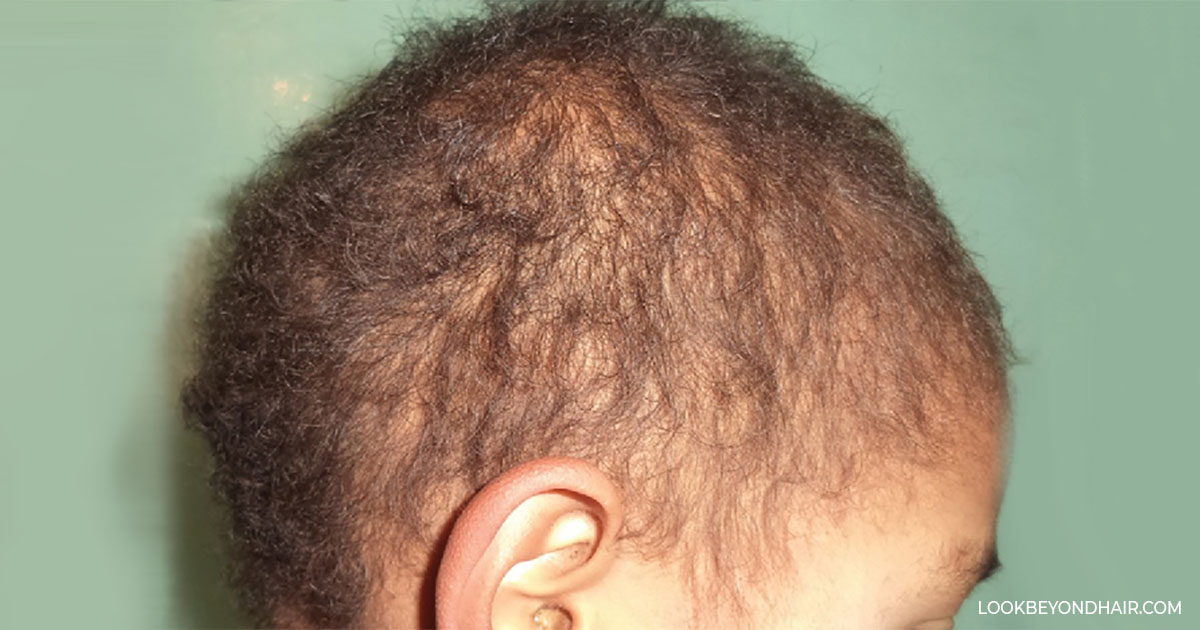
At Look Beyond Beauty, we empower individuals to look beyond conventional beauty standards and prioritize overall health. Today, we delve into a unique and challenging scalp condition called Monilethrix. This genetic disorder transforms hair fibers into delicate beads, posing challenges to appearance and well-being. Join us as we explore lifestyle options, nutritional insights, and the importance of consulting specialists to navigate the journey towards healthier, resilient hair.
Understanding Monilethrix
Monilethrix is a genetic hair disorder characterized by hair fibers resembling strings of beads. Nodes bead like structure along the length of the hair fiber create undulations, weakening the overall structure.
Under a microscope, affected hair fibers lose their cuticle covering over the nodes, making them brittle and prone to breakage. This condition often leads to diffuse hair loss, commonly at the back of the scalp and neck.
Common management options include:
- Embrace a hair care routine that prioritizes gentleness. Use a wide-toothed comb to detangle, avoid excessive heat styling, and opt for soft hair ties to minimize stress on fragile strands. Gentle handling can contribute to maintaining the integrity of the hair fibers.
- Consider protective hairstyles that reduce friction and prevent unnecessary breakage. Styles such as loose braids or buns can help minimize stress on the hair, preserving its strength and reducing the risk of breakage at the constrictions.
- Stimulate blood circulation to the scalp through regular massages. This can promote a healthier environment for hair growth, aiding in overall scalp health. Choose nourishing oils like coconut or jojoba to enhance the massage benefits.
- Include protein-rich foods into your diet to support hair strength and growth. Opt for sources like lean meats, eggs, legumes, and nuts, providing essential nutrients for maintaining the integrity of the hair fibers.
- Incorporate omega-3 fatty acids in foods like fatty fish, flaxseeds, and walnuts into your diet. These essential fats contribute to overall hair health and may help mitigate some of Monilethrix’s challenges.
- Ensure an adequate intake of vitamins and minerals, particularly those associated with hair health. Foods rich in vitamin E, iron, and zinc can support the resilience of hair strands.
Seeking Professional Guidance
Individuals with Monilethrix must consult specialists for personalized care. Depending on the severity and progression of the condition, consider reaching out to:
- Consult a hair care professional experienced in managing hair disorders. They can provide tailored advice on styling, products, and care routines to address Monilethrix’s unique needs.
- Seek the expertise of a trichologist, a specialist in hair and scalp health. Trichologists can offer insights into the underlying causes of Monilethrix and recommend targeted treatments to manage the condition.
- Dermatologists specializing in hair disorders can comprehensively evaluate and offer medical interventions or therapies to address Monilethrix.
Navigating the challenges of Monilethrix requires a holistic approach, encompassing gentle care practices, nutritional support, and professional guidance. At Look Beyond Beauty, we advocate for a journey towards healthier, resilient hair that aligns with your overall well-being. Embrace these lifestyle and nutritional strategies, and remember, consulting specialists is a crucial step in managing Monilethrix effectively.
With love and positivity,
Marcey 💖 XOXO
DISCLAIMER: The content in this blog is for informational purposes only. And not intended to diagnose, treat, cure, or prevent any medical condition or replace your healthcare professional’s advice and guidance. If you suspect a medical condition, please seek medical attention immediately.
You may also enjoy reading: Cravings: Decoding the Body’s Messages, Friends or Foe?
